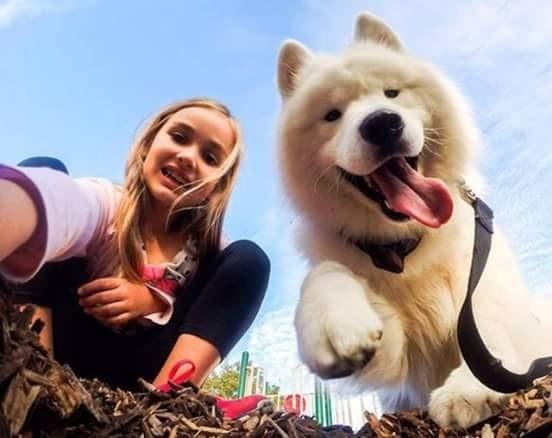The Genetically Prone Bark
Virtually all terriers and many small dogs, particularly Maltese, Poodles and miniature Schnauzers, fit into this category. These breed types have been pre-programmed to bark at movement or noise within their range. Sensitive alarm barkers once bred to alert the farmer of the fox in the hen house now announce that the phone is ringing, the neighbors are home or that the elevator has arrived. They must be trained to limit their barking. Training them to bark on command gives you control; you can turn it “on” or “off” on your orders! It’s not that you don’t want them to bark; you just want them to be appropriate. Find a suitable place or time where the yappy dog can bark to his heart’s content.The Alpha/Territorial
These barkers are most often unneutered males and/or guarding breed types. They believe that they are protecting their yard, house and general “air-space” from intruders such as the mailman, a squirrel, a passing dog or a neighbor. Neutering may take the overprotective and/or territorial edge off the intact dog. Training will get the genetically protective dogs’ instincts in line. Blocking the dog’s view of the property lines (stockade instead of chain-link fencing) and keeping him from patrolling the area around the front door or front porch may assist in cutting down the owner-absent barking. Monitor this type of dog carefully; do not permit him to bark at passersby when you are home. If you cannot silence him when you are there, you can’t expect much when you’re not.The Demanding Barker
This confident soul does not want to be left alone because the fun stops. He stands at the door and commands you to return to play with him. Both barking set-ups (explained below) and engaging toys work well to quiet this imp’s demands, as does the citronella anti-bark collar.The Bored Underexercised
Sporting, hound and herding breed types were bred to work all day long. Many retrievers, pointers, setters, collies and the like now find themselves sadly under-exercised, especially in the urban environment. These dogs need to be kept busy. If not, boredom turns into barking (not to mention chewing, pacing and digging). Most need at least two hours of vigorous, aerobic exercise a day. If you are going to be gone for an extended period of time (over six hours,) an hour of mentally challenging and physically active fun and games is mandatory. You should leave behind a panting, heaving, utterly exhausted dog as you set off for the day. Offering them breakfast from a stuffed KongTM or food-dispensing toy can also keep them busy.The Fearful, Anxious Dog
Some of these dogs fall into the category of toy and miniature breed types. Dogs that have been passed around from home to home and shelter rescues also fit into this group. Their histories may include coddling and over-protective handling, lack of proper socialization or isolation. Dogs that have never been out of the back yard or permanently paper trained apartment dwellers are candidates for anxiety behaviors if placed in a new home environment. These dogs suffer from separation anxiety when left behind, even for brief periods. Chewing, barking, house soiling and digging at doors or window sills are some typical responses. The majority of these dogs need to be properly socialized to the world around them. Obedience work with plenty of praise builds confidence, yielding a more stable dog; a dog with a better ability to cope.
Environmental Changes to Minimize Owner Absent
The anxious dog may feel less stressed-out when home alone if he’s confined to a kennel crate either the enclosed airline type (molded plastic) or a wire crate draped with a sheet or a tablecloth. With less space to worry about just the bed and a chew toy many dogs just curl up and calm down. A word of warning regarding dogs with severe anxiety problems (often a rescue/shelter dog): some dogs may go to pieces in a crate; they will shake, slobber, struggle and exhibit extre ! 
